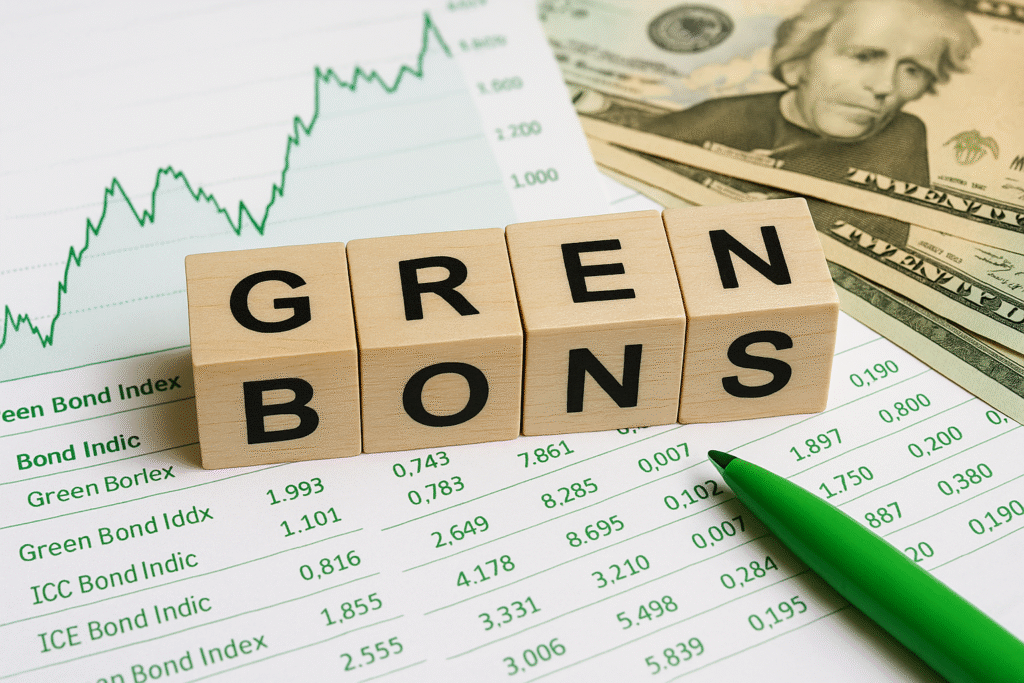Green Bond Indices: What are they and how to apply in the US?
Discover what Green Bond Indices are, how they work, and how to invest in them in the US. Understand their importance!
How to apply for green bond indexes

Green bonds are fixed-income instruments designed to fund projects with positive environmental or climate benefits. They function like traditional bonds, offering returns to investors, but their proceeds are exclusively allocated to green initiatives such as renewable energy, clean transportation, energy efficiency, and sustainable agriculture.
These bonds are typically issued by governments, municipalities, financial institutions, or corporations looking to improve their ESG (Environmental, Social, and Governance) profile while addressing urgent climate-related issues. Investors are drawn to green bonds not only for their returns, but for the opportunity to support sustainable development.
The Rise of Green Bond Indices
As the green bond market has grown, so has the demand for benchmarks to measure performance. This is where Green Bond Indices come into play. These indices track the performance of green bonds in the global or local markets and help investors make informed decisions.
Unlike traditional bond indices, green bond indices are curated to include only securities that meet strict environmental criteria. They serve as tools for portfolio benchmarking, passive investing, and monitoring the overall health of the green bond market.
Key Characteristics of Green Bond Indices
Green bond indices are not all created equal. The criteria used to include a bond can vary from one index to another. However, there are some general features that most green bond indices share:
- Bonds must finance or refinance eligible green projects.
- Issuers must provide transparency and regular reporting on the use of proceeds.
- Most indices require alignment with international standards such as the Green Bond Principles (GBP) or the Climate Bonds Initiative (CBI) taxonomy.
- Bonds must have a minimum credit rating or issuance size, depending on the index provider.
Popular providers of green bond indices include Bloomberg, S&P Dow Jones, ICE BofA, and Solactive.
How Green Bond Indices Work in Practice
Green bond indices operate similarly to traditional indices. They are constructed using specific eligibility criteria and are rebalanced periodically to reflect new issuances and market movements.
For example, the Bloomberg MSCI Green Bond Index includes only bonds that are independently assessed as green by MSCI ESG Research. This ensures investors can trust that the projects funded are genuinely sustainable and impactful.
Meanwhile, the S&P Green Bond U.S. Dollar Select Index tracks U.S. dollar-denominated green bonds, providing a benchmark specifically relevant for U.S.-based investors.
How to implement a strategy based on Green Bond Indices?
For those who want to integrate a strategy focused on green bond indices, the path is relatively straightforward.
First, define your investment objectives. Look for sustainability, financial return, or diversification. Then, choose a compatible index. Some focus on bonds issued in the US; others have a global scope.
Choose between investing directly in the bonds that make up the index or through ETFs that replicate it. Also, monitor performance regularly and review environmental impact reports.
Finally, make adjustments as your impact and financial return goals evolve.
Why Green Bond Indices Matter
Green bond indices offer more than just performance benchmarks. They play a critical role in increasing transparency in the sustainable finance sector.
By setting clear standards and applying rigorous eligibility criteria, these indices help prevent “greenwashing”, the practice of labeling investments as environmentally friendly without sufficient proof or impact.
In addition, these indices contribute to the mainstreaming of ESG investing by making it easier for investors to allocate capital toward sustainability goals.
As the climate crisis accelerates, tools like green bond indices will become even more important in mobilizing private capital for public good.
Final Considerations
Green bond indices are powerful tools that blend environmental responsibility with financial performance. In the U.S., they are gaining traction among institutional investors and ESG-conscious asset managers who seek to align their portfolios with climate goals.
As sustainable finance becomes a cornerstone of global economic strategy, understanding and applying green bond indices is no longer a niche interest, it’s a strategic necessity.
For investors looking to balance impact with income, these indices offer an accessible entry point into a rapidly expanding market.





